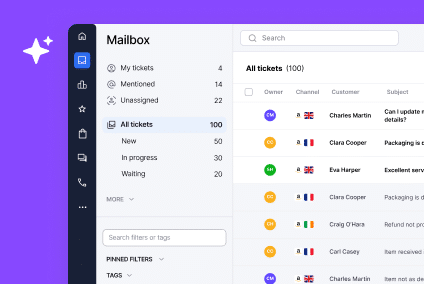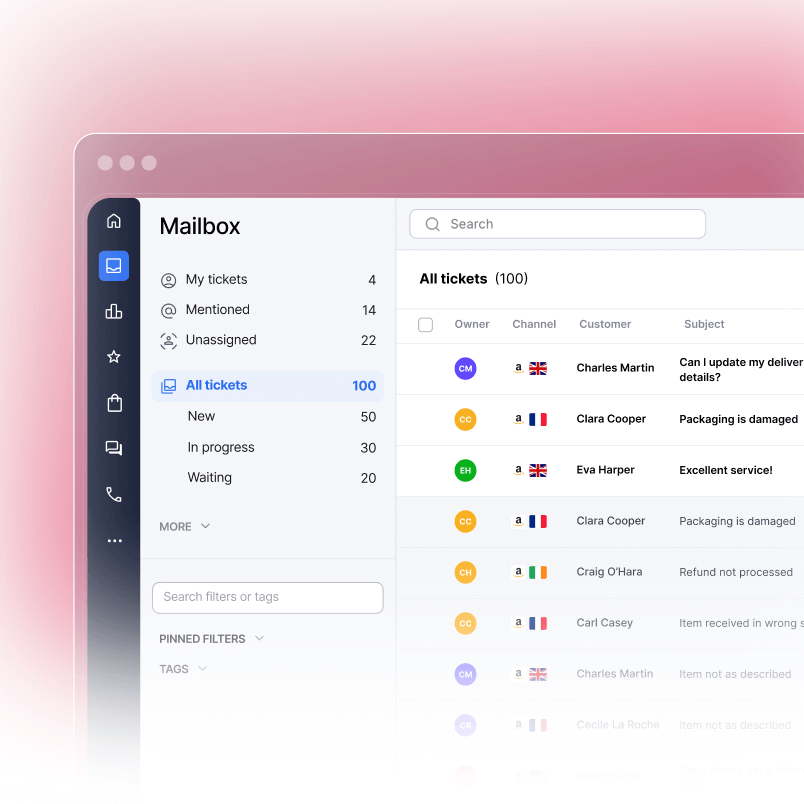What makes Magento Omnichannel integration essential for modern eCommerce success? Magento Omnichannel empowers businesses to deliver seamless shopping experiences across multiple touchpoints, from mobile apps to physical stores, by connecting all customer interactions through intelligent automation and headless architecture. This integration approach transforms how retailers manage inventory, customer data, and support workflows while maintaining consistent brand experiences everywhere customers shop.
As eCommerce continues to evolve beyond traditional storefronts, businesses need technology that adapts to customer expectations. Magento Omnichannel represents the next generation of commerce infrastructure, where flexibility meets functionality.
What is Magento Omnichannel Integration?
Magento Omnichannel integration creates a unified commerce ecosystem where all sales channels, customer touchpoints, and backend systems communicate seamlessly. Rather than operating separate systems for your website, mobile app, marketplace listings, and physical stores, everything connects through a centralized platform.
This integration approach includes several key components:
- Unified inventory management that updates in real-time across all channels
- Centralized customer data tracking preferences and purchase history
- Synchronized order management processing transactions from any source
- Integrated customer support handling inquiries regardless of the origin channel
The power of Magento Omnichannel lies in eliminating data silos. When a customer adds items to their cart on mobile, they can complete the purchase in-store with their selections already available. Support teams see complete customer histories whether inquiries arrive via email, social media, or live chat.
The statistics prove this approach works. Companies with strong omnichannel customer engagement strategies retain 89% of their customers, compared to just 33% for those with weaker omnichannel approaches. Additionally, omnichannel shoppers deliver a 30% higher lifetime value than single-channel shoppers.
How Does Headless Magento Integration Work?
Headless Magento integration separates the frontend presentation layer from the backend commerce functionality. This architectural approach gives businesses unprecedented flexibility in designing customer experiences while maintaining robust eCommerce capabilities.
In traditional Magento setups, the frontend and backend are tightly coupled. Headless architecture uses APIs to connect the commerce engine with any frontend technology stack, whether that’s a progressive web app, native mobile application, or IoT device interface.
The headless commerce market is experiencing explosive growth. The global headless commerce market reached $1.7 billion in 2023 and is projected to grow at a CAGR of 22.5%, reaching an estimated $13.2 billion by 2035. This dramatic expansion reflects businesses’ recognition that traditional platforms can’t keep pace with customer expectations.
Key advantages of headless Magento include:
- Faster page load times improving conversion rates
- Greater design flexibility creating unique brand experiences
- Easier A/B testing optimizing user journeys without backend changes
- Multi-experience delivery powering websites, apps, and emerging channels simultaneously
Companies utilizing headless architectures have observed a 23% reduction in bounce rates, indicating improved user engagement. Developers can build custom frontends using modern frameworks like React or Vue.js while Magento handles product management, pricing, checkout, and order fulfillment behind the scenes.
What Are the Benefits of Magento Omnichannel Support?
Implementing Magento omnichannel support delivers measurable improvements across operations and customer satisfaction. Businesses report significant advantages once their channels work together rather than in isolation.
Operational benefits include:
- Reduced inventory carrying costs through accurate multi-location visibility
- Lower support overhead with unified customer communication histories
- Decreased order errors from automated data synchronization
- Improved staff productivity eliminating manual data entry between systems
The numbers speak for themselves. Retailers using three or more channels increase consumer engagement 250% more than single-channel retailers. Furthermore, companies with omnichannel customer engagement increase sales revenue growth by an average 179% more than companies that do not implement similar strategies.
Magento omnichannel support improves customer experience by ensuring consistent pricing, product availability, and service quality regardless of how customers choose to shop. Someone browsing your Instagram shop sees the same promotions as website visitors, while their support history follows them across every interaction point.
The adoption rate continues accelerating. Over six in ten retail companies plan to migrate to headless commerce platforms by 2024, while over 20 percent already use them. Businesses understand that staying competitive requires embracing omnichannel capabilities.
How Does Magento eCommerce Automation Improve Operations?
Magento eCommerce automation eliminates repetitive tasks that consume team resources without adding strategic value. By automating routine processes, businesses free staff to focus on growth initiatives and complex problem-solving.
The adoption of automation is widespread and growing. 72% of successful eCommerce companies are already using automation in some parts of their workflows. Even more impressive, eCommerce businesses saw an 80% boost in lead generation and increased ROI by 45% by implementing eCommerce automation.
Common automation workflows include:
- Inventory synchronization – updating stock levels across all channels when items sell
- Order routing – directing fulfillment to optimal warehouses based on location and availability
- Customer communication – sending order confirmations, shipping updates, and review requests
- Return processing – generating labels and updating inventory when customers initiate returns
- Support ticket creation – automatically logging customer inquiries from any channel
Advanced Magento AI workflows take automation further by applying machine learning to predict demand, personalize product recommendations, and identify potential issues before they impact customers. 77% of eCommerce professionals use AI daily in 2025, up from 69% in 2024, demonstrating how rapidly AI has shifted from testing to essential business operations.
For example, AI-powered inventory forecasting analyzes seasonal trends, promotional performance, and market conditions to recommend optimal stock levels. This prevents both stockouts that lose sales and overstock situations that tie up capital. 80% of retail executives expect their companies to adopt AI-powered automation by the end of 2025, reflecting leadership confidence that AI is central to future growth strategies.
Omnichannel vs Multichannel Marketing
Understanding omnichannel use cases helps businesses identify opportunities within their own operations. These examples demonstrate how different retailers leverage Magento Omnichannel to solve specific challenges.
Fashion retailer scenario: A clothing brand operates physical stores, an eCommerce website, and sells through marketplaces. Their Magento Omnichannel integration enables customers to check in-store availability online, reserve items for fitting room pickup, and return online purchases at any physical location. Support teams access complete purchase histories whether customers contact them via Instagram DM or phone.
This approach aligns with consumer behavior. Buy online, pick up in-store (BOPIS) transactions in the U.S. are expected to grow to $154 billion by 2025, representing the rising popularity of flexible, hybrid shopping solutions that merge digital and physical retail.
Electronics distributor scenario: A B2B electronics supplier serves both direct customers and reseller partners. Their headless Magento setup powers separate storefronts for each audience with customized pricing, while managing inventory from a single backend. Automated workflows handle quote requests, approve bulk orders based on business rules, and sync with their ERP system.
This matters because 83% of B2B buyers make more than half of their purchases via digital channels, with the percentage of digital purchases set to rise even further in 2025.
Health and beauty scenario: A cosmetics company uses Magento Omnichannel to connect their subscription service with one-time purchases. Customers manage subscriptions through a mobile app built on headless Magento APIs, while the same backend handles marketplace sales and wholesale orders to retail partners.
These scenarios share common threads: unified data, automated workflows, and flexibility to serve customers however they prefer to shop. 73% of shoppers use more than one channel during their buying journey, making seamless omnichannel experiences essential rather than optional.
How Can Businesses Implement Magento AI Workflows?
Implementing Magento AI workflows begins with identifying high-impact processes where intelligent automation delivers the greatest returns. Rather than attempting to automate everything simultaneously, successful implementations follow a phased approach.
Implementation roadmap:
Phase 1: Assessment and Planning Evaluate current workflows to identify bottlenecks and manual processes consuming significant resources. Prioritize automations based on potential ROI and implementation complexity.
Phase 2: Integration Foundation Establish robust API connections between Magento and essential systems like your CRM, support platform, and inventory management tools. Quality integrations form the foundation for reliable automation.
Phase 3: Workflow Development Build automated workflows starting with straightforward processes like order confirmations and inventory updates. Test thoroughly before expanding to more complex automations.
Phase 4: AI Enhancement Layer machine learning capabilities onto proven workflows. Start with predictive features like demand forecasting or personalized recommendations before tackling more sophisticated applications. 48.9% of retail companies use AI to automate campaigns, increasing efficiency and personalization while reducing manual marketing work.
Phase 5: Optimization and Scaling Monitor performance metrics, refine workflows based on results, and expand successful automations to additional processes.
The key to successful implementation is choosing the right integration partner. Platforms like eDesk specialize in connecting Magento with the tools businesses already use, eliminating the need for custom development while providing enterprise-grade automation capabilities. 90% of retailers plan to invest in omnichannel fulfillment technologies to streamline customer experiences, demonstrating the industry-wide commitment to unified commerce.
Transform Your Magento Store with eDesk
Magento Omnichannel integrations represent the future of commerce technology, combining flexibility with powerful automation to meet evolving customer expectations. By connecting all channels through intelligent workflows, businesses create seamless experiences that drive loyalty while improving operational efficiency.
Ready to transform your Magento store into an omnichannel powerhouse? Explore eDesk’s Magento integration and discover how smart automation can elevate your customer experience. Book your free demo today and see firsthand how unified commerce operations can drive growth.
FAQ
What is headless Magento integration?
Headless Magento integration separates the customer-facing frontend from the backend commerce engine, using APIs to connect them. This architecture allows businesses to create custom shopping experiences using any frontend technology while Magento manages products, orders, and fulfillment behind the scenes.
How does Magento Omnichannel improve customer experience?
Magento Omnichannel improves customer experience by creating seamless shopping journeys across all touchpoints. Customers can browse on mobile, purchase in-store, and get support via any channel while businesses maintain complete context of their preferences, history, and interactions. Research shows that omnichannel customers spend 30% more than single-channel shoppers.
What are the best practices for Magento eCommerce automation?
Best practices include starting with high-impact workflows, ensuring quality integrations between systems, testing automations thoroughly before deployment, monitoring performance continuously, and gradually expanding automation as you prove ROI on initial implementations. Successful companies focus on automating repetitive tasks first to free up staff for strategic initiatives.
Can small businesses benefit from Magento Omnichannel?
Yes, small businesses benefit significantly from Magento Omnichannel by competing more effectively with larger retailers. Automation reduces the staff requirements for managing multiple channels, while unified customer data enables personalized experiences previously available only to enterprises with dedicated teams.
How long does it take to implement Magento Omnichannel?
Implementation timelines vary based on business complexity and existing infrastructure. Basic integrations can be operational within weeks, while comprehensive omnichannel transformations typically require 2-3 months. Phased approaches allow businesses to realize benefits quickly while building toward more sophisticated capabilities.




